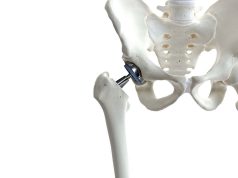Similar rate of any-cause death, disabling stroke for intermediate-risk patients with severe aortic stenosis
MONDAY, April 4, 2016 (HealthDay News) — For intermediate-risk patients with severe aortic stenosis, outcomes are similar for transcatheter aortic-valve replacement (TAVR) and surgical aortic valve replacement, according to a study published online April 2 in the New England Journal of Medicine. The research is being published to coincide with the annual meeting of the American College of Cardiology, held from April 2 to 4 in Chicago.
Martin B. Leon, M.D., from the Columbia University Medical Center in New York City, and colleagues randomized 2,032 intermediate-risk patients with severe aortic stenosis to undergo TAVR or surgical replacement. The patients were enrolled into two cohorts before randomization: 76.3 percent in the transfemoral-access cohort and 23.7 percent in the transthoracic-access cohort.
The researchers found that the rate of death from any cause or disabling stroke was similar between the groups (P = 0.001 for noninferiority). The Kaplan-Meier event rates were 19.3 and 21.1 percent in the TAVR and surgery groups, respectively, at two years (hazard ratio, 0.89; 95 percent confidence interval, 0.73 to 1.09). TAVR correlated with a lower rate of death or disabling stroke than surgery in the transfemoral-access cohort (hazard ratio, 0.79; 95 percent confidence interval, 0.62 to 1.00); however, outcomes were similar for TAVR and surgery in the transthoracic-access cohort.
“In intermediate-risk patients, TAVR was similar to surgical aortic-valve replacement with respect to the primary end point of death or disabling stroke,” the authors write.
The study was funded by Edwards Lifesciences.
Copyright © 2016 HealthDay. All rights reserved.








